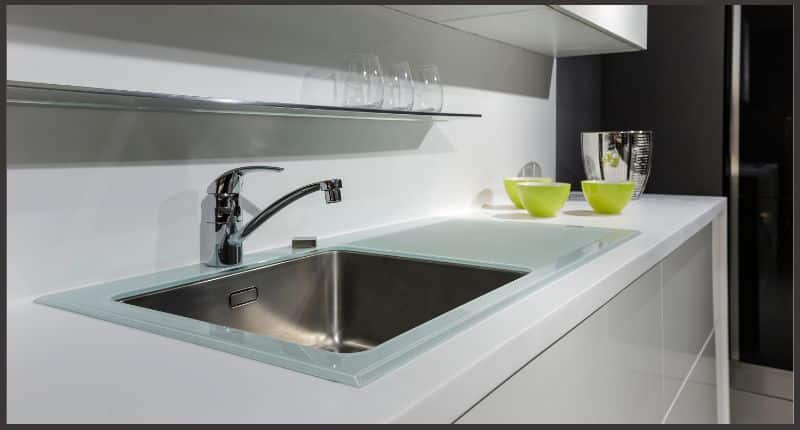Introduction:
Coffee makers have become an essential part of our daily routines, providing us with a much-needed caffeine boost to jumpstart our mornings. However, it’s crucial to prioritize safety when using these appliances, as they involve high temperatures and electrical components. Understanding and adhering to the safety rules for coffee makers is essential to prevent accidents and ensure a risk-free brewing experience. In this guide, we will explore some key safety guidelines to keep in mind while using coffee makers, providing you with the knowledge necessary to enjoy your morning cup of joe with peace of mind. Let’s delve into the safety rules for coffee makers and help you maintain a hazard-free coffee brewing routine.
What Are the Safety Rules for Coffee Makers?
Coffee is a beloved beverage that millions of people around the world enjoy every day. Whether it’s a steaming cup in the morning to kickstart the day or a leisurely afternoon pick-me-up, coffee has become an integral part of our lives. And for most coffee lovers, owning a coffee maker at home is a no-brainer. But as with any electrical appliance, it’s essential to understand the safety rules to ensure that you can enjoy your coffee without any worries. In this article, we will explore the safety rules for coffee makers, providing you with practical tips and guidelines to prevent accidents and maintain a safe brewing experience.
1. Read the Instruction Manual Carefully
Before using any coffee maker, it’s crucial to familiarize yourself with the manufacturer’s instructions. Most people tend to skip this step, assuming that all coffee makers work the same way. However, each coffee maker comes with its own unique features and safety precautions. So take the time to read the instruction manual thoroughly to understand how to operate your specific coffee maker safely.
2. Keep the Coffee Maker Clean
Regular cleaning is vital for both the taste and safety of your coffee. Residue from old coffee grounds and oils can accumulate over time and affect the flavor of your brew. Additionally, these residues can become breeding grounds for bacteria, which can pose health risks. To keep your coffee maker clean, follow these steps:
– After every use, remove and discard any remaining coffee grounds.
– Clean the removable parts, such as the carafe, filter basket, and lid, with warm, soapy water. Rinse them thoroughly.
– Periodically descale your coffee maker to remove mineral deposits. Follow the manufacturer’s instructions for descaling solutions and frequency.
– Wipe down the exterior of the machine with a damp cloth.
3. Don’t Overfill the Water Reservoir
Overfilling the water reservoir can lead to spillage and potential accidents. Follow the marked fill lines on your coffee maker to ensure you add the correct amount of water. If there are no fill lines, leave around an inch of space at the top to prevent overflow during brewing.
4. Check the Power Cord Regularly
Inspect the power cord of your coffee maker regularly for any signs of damage, such as fraying or exposed wires. If you notice any issues, it’s imperative to replace the cord immediately. Using a damaged cord can result in electric shocks or fires. Additionally, make sure the power cord is positioned away from hot surfaces and never let it come into contact with water.
5. Use the Right Filter and Coffee Grounds
When using a drip coffee maker or similar models that require paper filters, ensure that you use the correct size and type of filter recommended by the manufacturer. Using the wrong filter can cause blockages and overflow. Moreover, using the incorrect grind size for your coffee grounds can lead to clogs and potentially damage the machine. Follow the guidelines provided in the instruction manual or consult with a reputable coffee retailer to ensure you are using the right filter and coffee grounds.
6. Avoid Overheating the Coffee Maker
Leaving your coffee maker on for extended periods can lead to overheating, which can be a fire hazard. To prevent this, always turn off your coffee maker after use. Some coffee makers come with a built-in auto shut-off feature, which is a great safety feature to look for when purchasing a new machine. If your coffee maker doesn’t have this option, make it a habit to turn it off when you’re finished brewing.
7. Place the Coffee Maker in a Safe Location
Choose a safe location for your coffee maker. Ensure it is on a stable, flat surface away from the edge of countertops or tables. Avoid placing it near water sources, such as sinks or faucets. Additionally, keep it away from flammable materials like curtains or paper towels that can catch fire if they accidentally come into contact with the coffee maker.
8. Don’t Leave the Coffee Maker Unattended
Although it might be tempting to multitask while your coffee is brewing, it’s essential not to leave the coffee maker unattended. Accidents can happen within seconds, and being present while the coffee maker is operating allows you to handle any potential issues immediately. Stay vigilant and never leave your coffee maker running when you leave the house.
9. Keep Children and Pets Away
Coffee makers can be fascinating for children and pets. The smell, the sound, and the intriguing buttons may attract their curiosity. To ensure their safety, keep the coffee maker out of their reach. Place it in an area that is inaccessible to children and pets, or use cabinet locks to prevent them from accidentally turning on the machine or getting burned from hot surfaces.
10. Understand How to Handle Hot Surfaces
Coffee makers involve hot surfaces, such as the carafe, plates, or the heating element itself. Take precautions to avoid burns or other injuries:
– Use oven mitts or heat-resistant gloves when handling hot parts or surfaces.
– Give the coffee maker enough time to cool down before cleaning or performing maintenance.
– Make sure the carafe is securely in place before pouring hot coffee.
11. Regularly Inspect and Maintain Your Coffee Maker
Regular maintenance is crucial for the longevity and safety of your coffee maker. Inspect the machine periodically for signs of wear and tear, such as loose parts or leaks. If you notice any issues, contact the manufacturer or a professional technician for repairs. By keeping your coffee maker in optimal condition, you can minimize the risk of accidents and ensure a safe brewing experience.
In conclusion, coffee makers are a convenient and essential appliance for coffee enthusiasts. By following these safety rules, you can enjoy your favorite brew without compromising your well-being. Remember to read and understand the instruction manual, keep your coffee maker clean, use the correct filters and coffee grounds, and never leave it unattended. Taking these precautions will not only ensure your safety but also enhance the longevity of your coffee maker. So brew your coffee with peace of mind, and savor every sip!

Photo by Mahmudul Hasan on Unsplash
Table of Contents
Additional Guide
Here are three related articles that provide helpful information about maintaining kitchen appliances and keeping the kitchen clean:
1. Best Homemade Drain Cleaner: Simple Solutions for Clog-Free Drains – This article offers solutions for keeping drains clean and clog-free, which is essential for maintaining a clean and functional coffee maker.
2. Best Way to Clean Kitchen Sink Drain: Discover Effective Techniques – This article provides tips and techniques for effectively cleaning a kitchen sink drain, which is important for a hygienic kitchen environment.
3. Glass Food Processor: Top 8 Durable and Efficient Picks – While not directly related to coffee makers, this article discusses the importance of choosing durable and efficient kitchen appliances, highlighting the need for safety and reliability in coffee makers as well.
FAQs: What are the safety rules for coffee makers
What are the safety rules for coffee makers?
1. Read the instructions: Familiarize yourself with the user manual and follow the manufacturer’s guidelines for safe use and maintenance of the coffee maker.
2. Use a grounded outlet: Plug your coffee maker into a properly grounded electrical outlet to reduce the risk of electrical shock.
3. Avoid water contact with electrical parts: Make sure no water comes into contact with the electrical components of the coffee maker. This includes avoiding spills, not letting the cord hang over the edge of the counter, and keeping the cord and plug dry.
4. Use heat-resistant surfaces: Place your coffee maker on a heat-resistant surface, away from any flammable materials. This helps prevent accidental fires or burns.
5. Never leave it unattended: When the coffee maker is in use, it’s important to stay nearby and keep an eye on it. This helps prevent any mishaps and ensures immediate action can be taken if needed.


